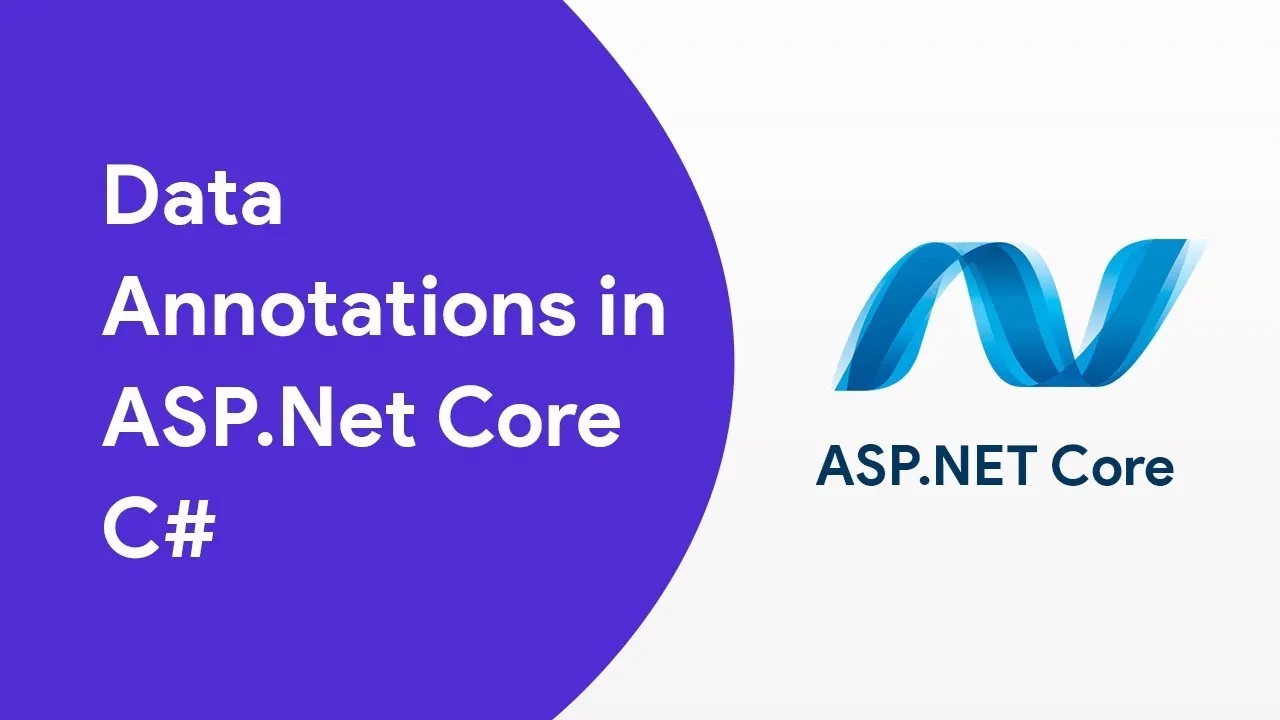New Data Annotations in .NET 8 Web API
By: Syed Mohamed | Published on: September 10, 2025
Category: .Net Core

New and Enhanced Data Annotation Attributes in .NET 8
Here’s a clear breakdown of the new Data Annotation attributes introduced in .NET 8 for Web API (System.ComponentModel.DataAnnotations), along with enhancements to existing ones:
1. RequiredAttribute with DisallowAllDefaultValues
-
What it does: Ensures a value isn’t left at its default (e.g.,
Guid.EmptyforGuidstructs). -
Use case: When using value types (structs) like
Guid, simply marking them[Required]doesn't catchGuid.Empty. Now you can write: [Required(DisallowAllDefaultValues = true)]
public Guid MyId { get; set; }
This forces a non-default value.
RangeAttribute with MinimumIsExclusive and MaximumIsExclusive
-
What it does: Allows specifying whether range boundaries are inclusive or exclusive.
-
Example (both boundaries exclusive):
[Range(0, 100, MinimumIsExclusive = true, MaximumIsExclusive = true)]
public int Age { get; set; }
This restricts Age to values strictly between 0 and 100 (i.e., 1–99).
LengthAttribute
-
What it does: Validates minimum and maximum length for strings and collections.
Example:
[Length(5, 100)]public string Username { get; set; }
[Length(1, 5)]public List<string> Courses { get; set; }
This ensures proper sizing, improving input validation.
Base64StringAttribute
What it does: Validates that a string is valid Base64 format.
[Base64String]public string Hash { get; set; }
Handy for validating encoded data—not intended for password storage.
AllowedValuesAttribute & DeniedValuesAttribute
AllowedValues: Specifies a list of permitted values.
[AllowedValues("Standard", "Premium", "Enterprise")]public string Tier { get; set; }
DeniedValues: Specifies a list of prohibited values.
[DeniedValues("Admin", "Administrator")]public string Username { get; set; }
These eliminate the need for custom validation logic for common scenarios.
Improved Performance via Source Generators for Options
When using these annotations on configuration classes (e.g., via IOptions<T>), validation is applied at startup using generated code—this results in faster startup and more efficient validation.
Summary Table
| Attribute | Purpose |
|---|---|
Required(DisallowAllDefaultValues = true) |
Prevents default values (e.g., Guid.Empty) |
Range(..., MinimumIsExclusive/MaximumIsExclusive) |
Exclusive/inclusive numeric range validation |
Length(min, max) |
Enforces length on strings or collections |
Base64String |
Validates Base64-encoded string |
AllowedValues(...) |
Restricts value to specified list |
DeniedValues(...) |
Prohibits specific values |
public class ConfigOptions{ [Required(DisallowAllDefaultValues = true)] public Guid InstanceId { get; set; }
[Range(1, 10, MinimumIsExclusive = true, MaximumIsExclusive = true)] public int RetryCount { get; set; }
[Length(5, 50)] public string ApplicationName { get; set; }
[Base64String] public string SigningKey { get; set; }
[AllowedValues("Debug", "Release")] public string BuildMode { get; set; }
[DeniedValues("Test", "Mock")] public string Environment { get; set; }}
In an ASP.NET Core setup, you could bind and validate it like this:
builder.Services .AddOptions<ConfigOptions>() .BindConfiguration("Config") .ValidateDataAnnotations() .ValidateOnStart();
This ensures your application fails fast if configuration is invalid.
Why This Matters
-
Expressive validation rules—More concise and declarative than writing custom logic.
-
Better cloud-native configuration validation—Especially useful when validating options loaded from settings files or environment variables.
-
Performance optimized—Source generators reduce runtime overhead.
-
Cleaner models—Annotations remain close to the data, making the intention clearer.
Comments
No comments yet. Be the first to comment!